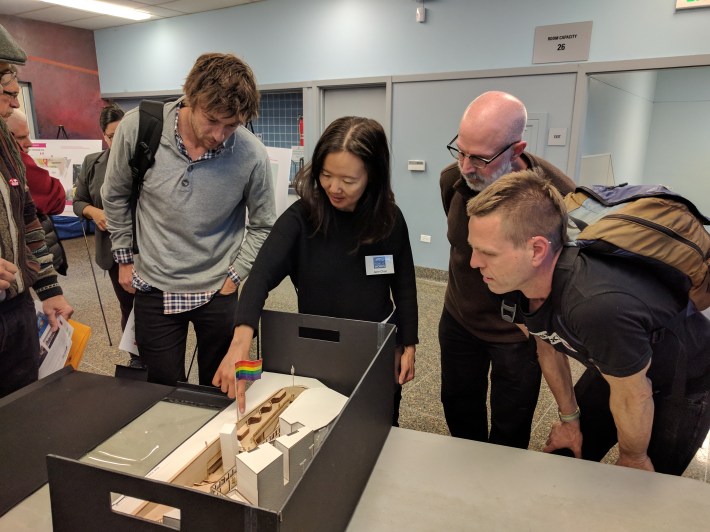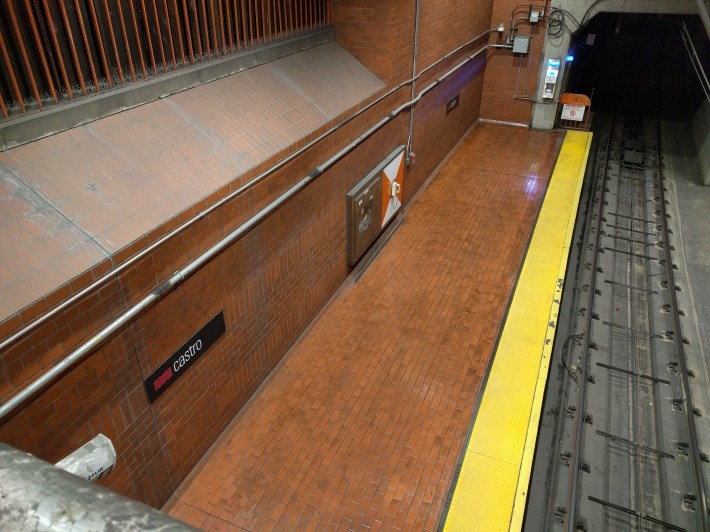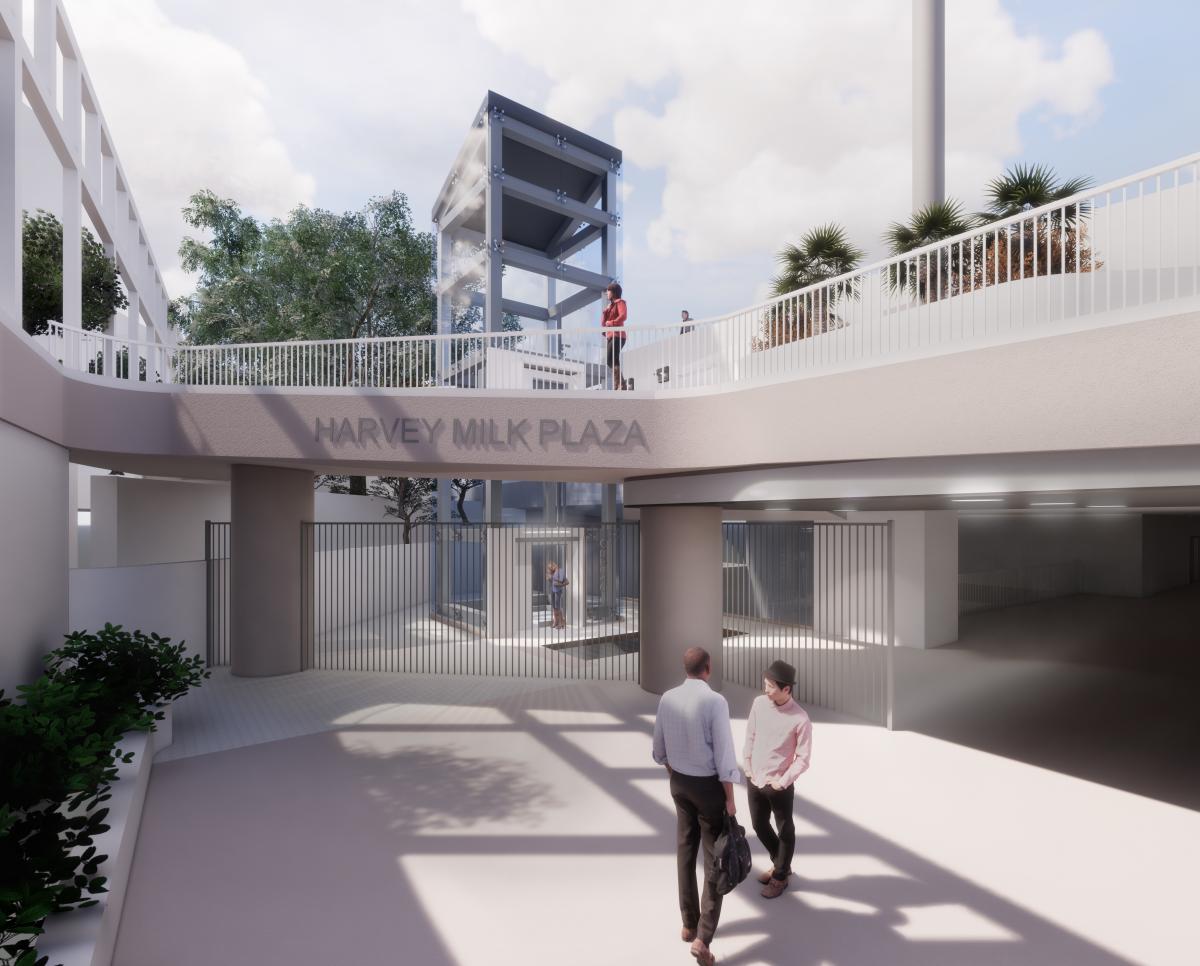Note: GJEL Accident Attorneys regularly sponsors coverage on Streetsblog San Francisco and Streetsblog California. Unless noted in the story, GJEL Accident Attorneys is not consulted for the content or editorial direction of the sponsored content.
Taking a Muni elevator is a two-step process. First, one waits to get down to the mezzanine level to go to the fare gates. Then it takes a second elevator ride--and a second wait--to get down to the train platform.
In the era of cash fares and paper tickets, there was some logic to this, since most people needed to go to the clerk's booth to pay the fare. But in the age of Clipper and electronic payment, the two step elevator is just an incredible waste of time. And it can mean the difference between catching and missing a train.

That's why the SFMTA is in the process of adding the system's first elevator that will go directly from street to platform level, as part of a project to improve accessibility at Castro Station. "This isn't required by the Americans with Disabilities Act," explained Kelley McCoy, a spokeswoman for the project, at last night's open house in the Eureka Valley Rec Center around the corner from the station. "We're putting this in proactively."
The $3 million project is also going to give the agency more ability to do repairs and overhauls--once the new elevator is installed, the existing elevator on the opposite side of Market can be repaired and updated without making the station inaccessible to the disabled. "This creates redundancy," said McCoy.
Muni patrons who take the new elevator will be expected to pay their fare by tagging on board the train. They'll also have the option of getting off the elevator at mezzanine level to pay their fare at the normal fare gates and/or to access the outbound train platform.

“I’m glad the elevator project is happening,” said Jamison Wieser, a nearby resident who attended the meeting. A few years back, Wieser spent six months in a leg cast, so he understands what it means to be disabled. However, he said everyone will benefit, including families with small children and strollers. “One day you’ve got a whole bunch of groceries… it’s beneficial for everyone.”
Part of the project involves reducing the slope at Harvey Milk Plaza, to make it easier to get to the elevator in a wheelchair. The city is also planning to widen the sidewalk on the station side of Market Street to make it easier to transfer from buses.
The design takes advantage of the existing passageway over the station mezzanine, joining Castro and Collingwood Street. The passageway is perfectly situated so the elevator shaft lands next to the mezzanine level and the platform. SFMTA officials said some people requested they put the elevator on the opposite side of Castro Street, in Jane Warner Plaza, but they said that would miss the train platform which curves away from the plaza as it follows its alignment under Market Street.
Meanwhile, a wheelchair-bound attendee (she asked not to be named in this story) was concerned about the elevator's placement over the western-most end of the platform, since the inbound trains stop on the eastern end. She anticipates using the new elevator, but is concerned about backtracking the length of the platform to board. "Why not have the train stop where the elevator lets out?" SFMTA officials said they would see if it's possible to modify where the trains stop.
The new elevator will start construction in 2019-2020 and should take about a year to finish. It is being constructed independently of the larger Friends of Harvey Milk project, which is looking to upgrade the station plaza more generally.
SFMTA is asking the public to vote on three options for how the elevator shaft's glass "skin" will look. Vote online on the project web page, or attend the next meeting, Monday, March 12, 6-8 p.m., also in the upstairs multipurpose room, Eureka Valley Rec. Center, 100 Collingwood Street, S.F.





